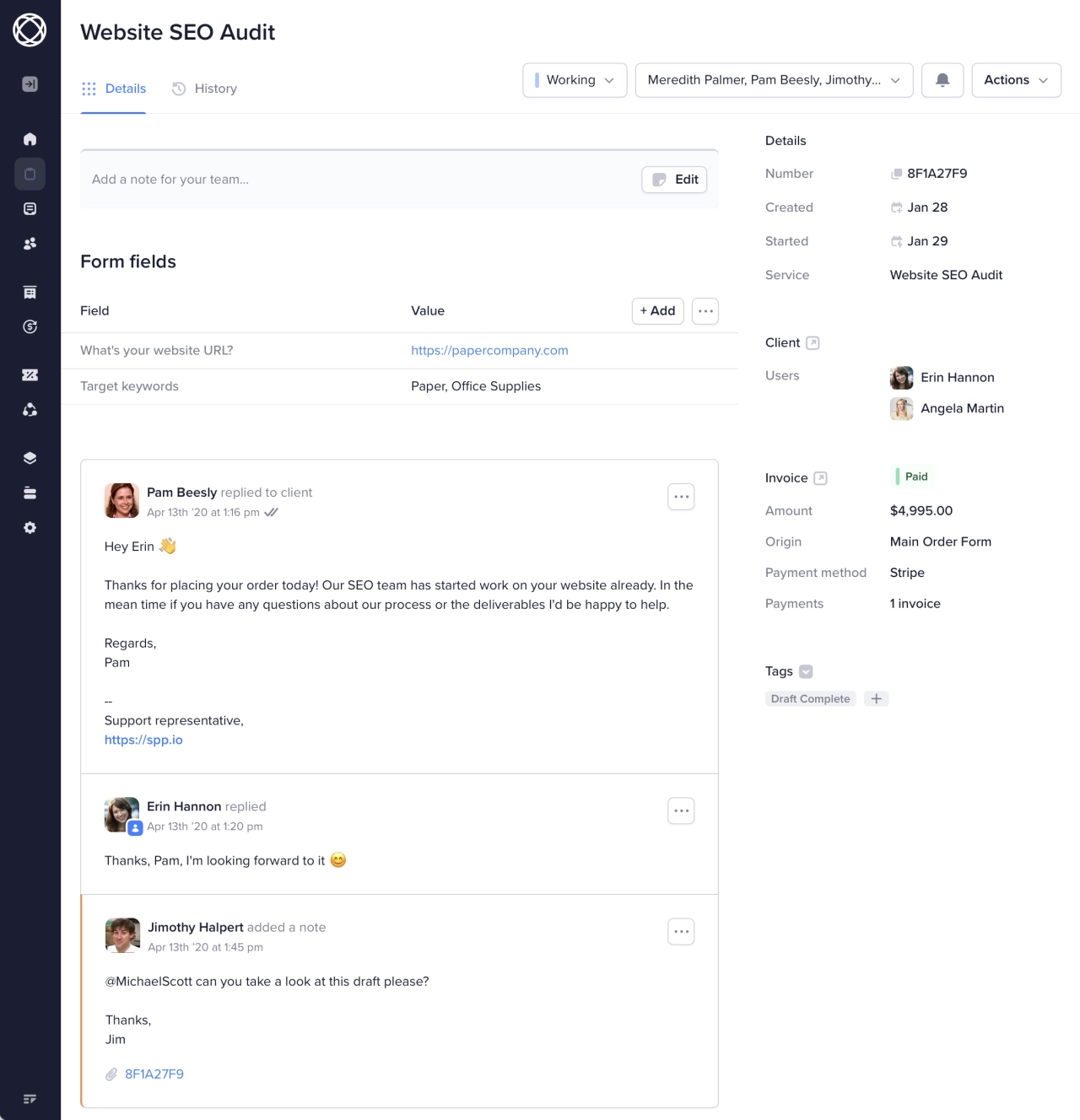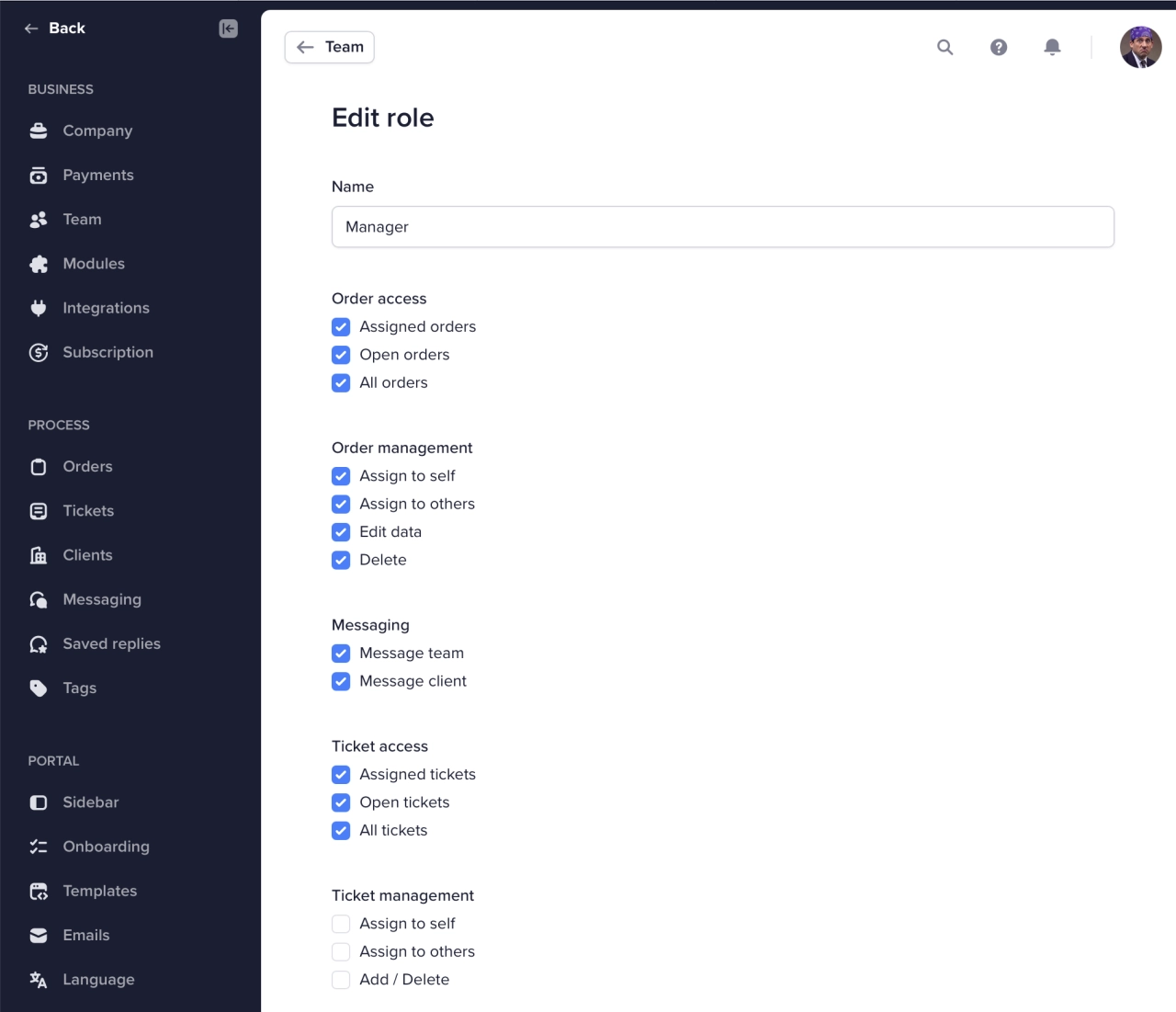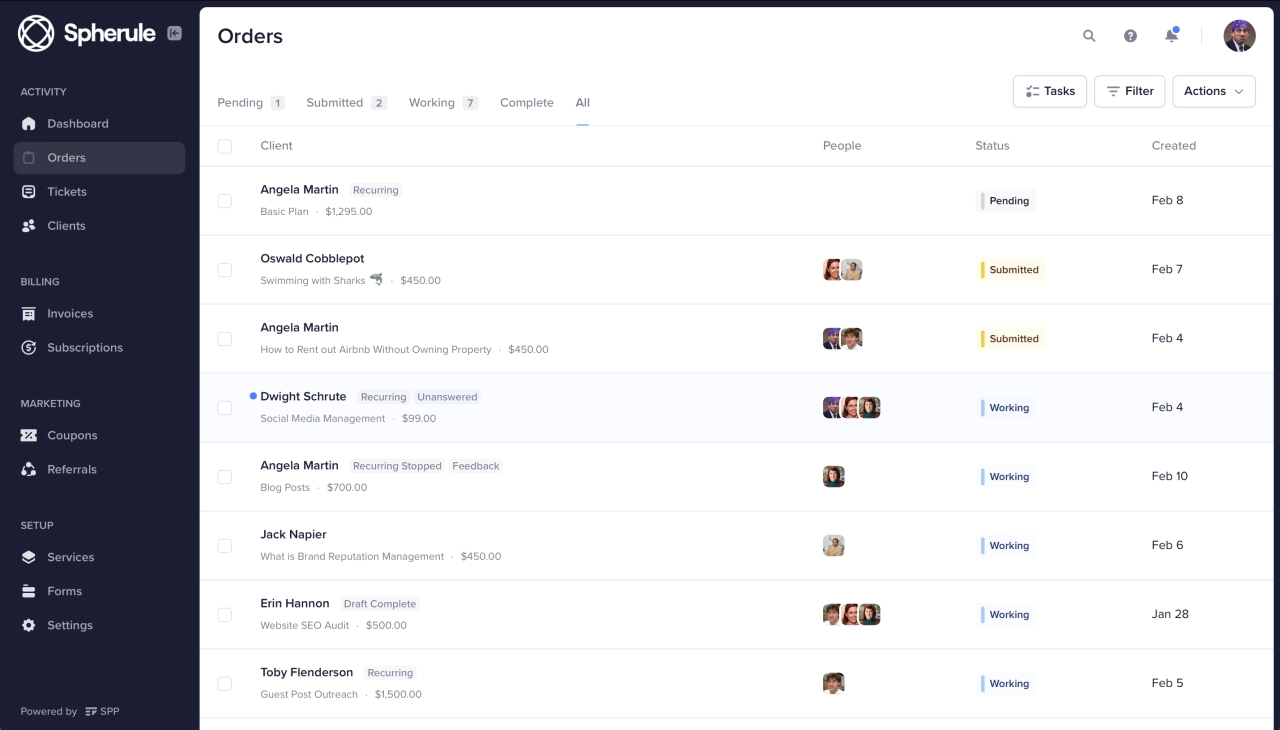Turn purchased services into projects
Automate onboarding and project setup for your team.
Custom production flow
All client information in one place
Clear timelines for everyone involved

Build tasks and SOPs for your team
Create a repeatable checklist for each service you offer, or add one-off tasks as needed.
Repeatable or one-off tasks
Dynamic task deadlines
Automatic assignees

Collaborate internally, or with clients
Back and forth project messaging, that feels just like email.
Team notes
Internal project updates for your team.

Client messages
Send client-facing updates and project reports.

Assign your team and track their workload
Make sure everybody knows what they need to do next.
Assign based on purchased services
Assign different steps to different people
Assign account managers to bigger clients


SPP is fantastic for my content writing agency. It offers an awesome user experience for my customers and team members, plus the feature set is excellent.

Limit access to sensitive data
Use roles to control team member permissions.


Ready to give it a try?
You're in good company. We've helped agencies like yours sell $500M+ in services.


